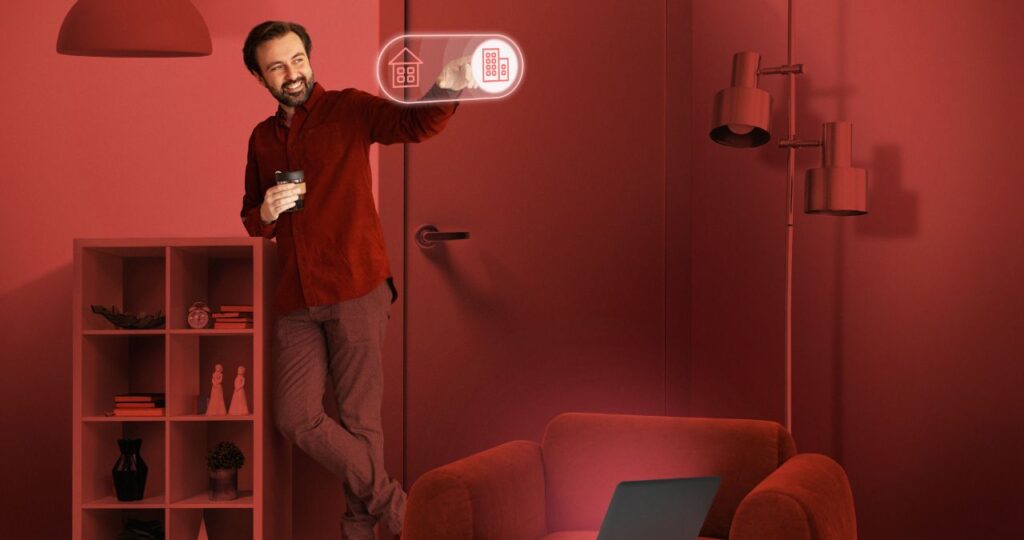In an era where digital innovation is constantly redefining how we connect, communicate, and collaborate, Mifroom emerges as a name to watch. Though still under the radar for some, Mifroom is rapidly gaining attention as a versatile and transformative online platform with the potential to disrupt several digital industries.
From social networking and virtual collaboration to content sharing and immersive communication, Mifroom brings a fresh perspective on how people interact online. In this in-depth article, we explore what Mifroom is, its core features, the technology behind it, its key applications, and why it might be the next big thing in the online platform space.
1. What Is Mifroom?
At its core, Mifroom is an all-in-one digital platform designed to blend the functionalities of:
-
Virtual meeting spaces
-
Social media
-
Cloud-based collaboration tools
-
Immersive 3D environments
Think of Mifroom as a next-generation hybrid between Zoom, Slack, Discord, and even the Metaverse. It offers a flexible space where users can host meetings, build communities, stream content, collaborate in real time, and do so with an elevated layer of personalization and presence.
Whether you’re a business professional, content creator, educator, or digital community builder, Mifroom offers something for everyone.
2. The Origin and Vision of Mifroom
The concept of Mifroom was born from a desire to eliminate the fragmentation of online tools. Users today juggle dozens of apps to handle different needs — video conferencing, document sharing, project management, chat, streaming, and more. Mifroom aims to streamline the experience by providing a unified interface with customizable modules.
The founding vision was simple yet powerful:
“To create an online space where people can do more than just talk — they can build, share, experience, and grow — all in one room.”
The term “Mifroom” is said to be derived from “My Interactive Future Room,” highlighting its core principle: personalization, interactivity, and futuristic collaboration.
3. Key Features That Set Mifroom Apart
Mifroom stands out because it isn’t just another communication tool. It offers an ecosystem of features that make it adaptable for multiple industries and use cases. Here are some of the platform’s key innovations:
a. 3D Virtual Rooms
Users can create fully customizable 3D environments — think offices, classrooms, lounges, or event halls — where participants can move, talk, interact, and share content naturally.
b. Multi-Layered Communication
Mifroom allows text, voice, video, and spatial audio chat, all within the same room. This makes conversations feel more organic and immersive.
c. Modular Apps Integration
You can plug in apps like:
-
Google Drive
-
Trello
-
Spotify
-
YouTube
-
Canva
This creates a truly interactive workspace without toggling between tabs.
d. Smart AI Assistants
Mifroom includes AI-powered bots that can:
-
Take meeting notes
-
Summarize conversations
-
Suggest action items
-
Offer real-time translation
e. Community and Event Management
Host large-scale webinars, panel discussions, gaming tournaments, or private get-togethers — all with tools for registration, moderation, and analytics.
4. How Mifroom Is Being Used Today
As of mid-2025, early adopters of Mifroom span across industries and communities. Here are a few key ways it’s being used:
a. Remote Work and Virtual Offices
Companies use Mifroom to:
-
Set up digital workspaces
-
Foster team engagement
-
Hold hybrid meetings
-
Simulate water-cooler conversations in 3D rooms
b. Education and Training
Educators leverage Mifroom for:
-
Virtual classrooms
-
Interactive learning modules
-
Group discussions with breakout rooms
-
Gamified lessons using avatars and virtual tasks
c. Content Creators and Influencers
Mifroom allows creators to:
-
Host live shows in custom-designed studios
-
Stream with dynamic audience engagement
-
Sell digital products or memberships within their room
d. Gaming and Fan Communities
Gamers and fandoms use Mifroom to:
-
Create fan hubs
-
Collaborate on projects
-
Attend live gaming events and watch parties
5. The Technology Behind Mifroom
The platform is built on modern web technologies with high scalability and performance. Some of the key technologies include:
-
WebGL and WebXR: For rendering immersive 3D environments in-browser.
-
Node.js and WebRTC: To support real-time voice/video communication.
-
Blockchain Integration (Optional): For digital ownership, NFTs, and decentralized identity features.
-
AI/ML Algorithms: For personalization, content suggestions, and natural language understanding.
-
Zero-Trust Security Model: Ensures encrypted and secure interactions for all users.
Mifroom is also optimized for mobile and tablet devices, making it accessible without the need for VR headsets or high-end computers.
6. Why Mifroom Might Be the Next Big Thing
✔ Convergence of Tools
Mifroom solves the problem of tool fatigue by unifying communication, collaboration, and creation in one place.
✔ Customizable for Any User
From solo entrepreneurs to large enterprises, Mifroom can be scaled up or down based on the user’s goals and community size.
✔ Immersive but Accessible
Unlike full-blown Metaverse platforms that require VR equipment, Mifroom brings immersion to the browser—no downloads required.
✔ Community-Driven Development
Mifroom has an open feedback loop, with frequent updates based on user suggestions and real-world use cases.
7. The Roadmap Ahead
While already feature-rich, Mifroom is planning several upcoming innovations:
-
AI-driven interactive avatars
-
Augmented reality (AR) extensions
-
Decentralized identity systems
-
Built-in monetization tools for creators
-
Offline sync mode for poor connectivity zones
The team behind Mifroom is also exploring partnerships with educational institutions, NGOs, and hybrid event organizers, suggesting a broader push into the mainstream.
8. How to Get Started with Mifroom
Getting started is easy:
-
Visit the official website [Mifroom.com] (hypothetical link).
-
Create a free account.
-
Choose a room type (e.g., workspace, classroom, studio).
-
Customize your room layout, tools, and permissions.
-
Invite others to join and collaborate.
A free tier exists for individuals and small teams, with premium plans unlocking enterprise-grade features, storage, and branded environments.
9. Potential Challenges and Criticisms
As with any ambitious platform, Mifroom faces challenges:
-
User onboarding complexity due to its many features
-
Browser compatibility limitations for older devices
-
Data privacy concerns, especially in educational or medical sectors
-
Skepticism toward metaverse-like platforms after past failures
However, Mifroom is actively addressing these with:
-
Interactive tutorials
-
Device-agnostic UI
-
Transparent privacy policies
-
Optional decentralized storage options
Conclusion
Mifroom represents a bold, thoughtful reimagining of how we interact online. By merging immersive environments with productivity, creativity, and social interaction, it’s well-positioned to become the go-to digital platform for the post-Zoom, post-Slack, post-Metaverse world.







